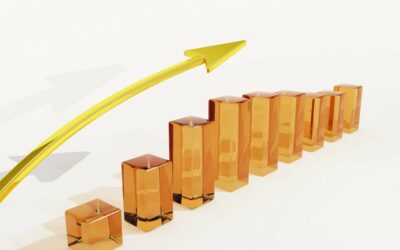By Libby Cantrill, Head of US Public Policy & Allison Boxer, US Economist
With skyrocketing gas and grocery prices, and inflation polling as the top concern for U.S. voters (see recent Gallup poll here), it is no surprise that President Biden is doing whatever he can – both substantively and rhetorically – to fight inflation.
However, the reality is that outside of Congress – which has ultimate control over fiscal policy – and the Federal Reserve – which directs monetary policy and which President Biden stresses remains very much independent – the White House is limited in what it can do to fight inflation. Several efforts are underway or under consideration.
· The release of oil from the Strategic Petroleum Reserve (SPR): The most notable action taken so far has been the Biden administration’s announcement at the end of March that it would release 180 million barrels from the SPR, the nation’s stockpile of oil, over six months to help replace oil imports lost from Russia (estimated to be 1 million – 3 million barrels/day).
Yet, given that refineries in the U.S. are running near full capacity, and labor force, infrastructure, and financial considerations remain obstacles to boosting refining capacity, the impact of the SPR release has been relatively limited, and the price of gas has continued to creep up since the announcement. While we have seen the White House now focus efforts on refining capacity, our expectation is that the summer could see new record highs for gas prices in the U.S.
· The removal of tariffs: The White House is contemplating removing tariffs imposed on China by President Trump, which according to some estimates cover nearly two-thirds of goods imported from China (read a Peterson Institute analysis on the tariffs here).
However, we believe tariff removal would be less significant than some have alleged in Washington, likely shaving off around 0.3 percentage points from U.S. CPI if they were rolled off altogether. While that amount seemed significant when CPI was running at 2%, it hardly would move the needle with core CPI above 6%. It’s also possible that the impact could be even smaller this time, since companies have had several years to adjust supply chains to mitigate the effects of tariffs.
Indeed, there appears to have been some import substitution away from China and toward Europe in the quarters following the initial implementation of tariffs. Not only would the inflation impact be limited, in our view, but we could also see political pushback from both Republicans and Democrats, as well as from voters, who have the highest unfavorable views of the Chinese government in recent history (for details, see Pew research here).
· Combatting elevated food prices: The Biden administration has been focused on combatting food inflation by increasing domestic farm production and clamping down on oligopolistic industries they allege are abusing their pricing power, particularly the meat industry (read a statement from the administration here). While these efforts may be helpful over time in increasing domestic food supply and making the U.S. more resilient from a national security perspective, any efforts aimed at food production are much more long-term and are unlikely to materialize before the midterm elections.
· Drug pricing, renewable energy tax credits, and immigration? Policy shifts here could help – although likely over time and not in the immediate term – but all require Congress to act.
The reality is that many of the policies that the Biden administration has been pushing – long before inflation became the economic and political problem that it is today – require Congress to act. Drug pricing (e.g., allowing Medicare to negotiate pharmaceutical prices in the same way as other parts of the U.S. government) and renewable energy tax credits were part of the president’s Build Back Better (BBB) agenda, which has been moribund since December when Senator Manchin (D-WV) poured cold water over it.
We are still of the view that a skinny BBB bill could come together, which would likely include renewable tax credits, decreases in drug prices, and tweaks to the tax code, but progress needs to be made by late summer (early fall at the latest), and again the impact on inflation in the short term would be negligible.
Bottom line: The White House understands that inflation is both an economic and a political problem that will likely be front and center in the November midterms. We see inflation trending lower as we approach the end of the year – but still remaining high – as consumers continue to shift from goods to services, stimulus fades, and tighter financial conditions slow growth.
The cold reality is that outside of the Fed and Congress, there is not much the White House can do to really move the needle on inflation. Nevertheless, we should expect them to do what they can unilaterally, as well as continue to push Congress to take action on the BBB agenda, something that likely would not help inflation in the short term but could help galvanize the Democratic base going into the midterms.




